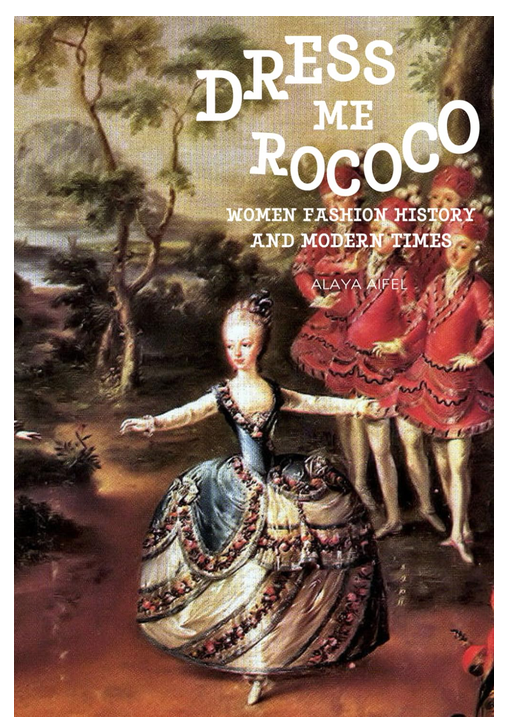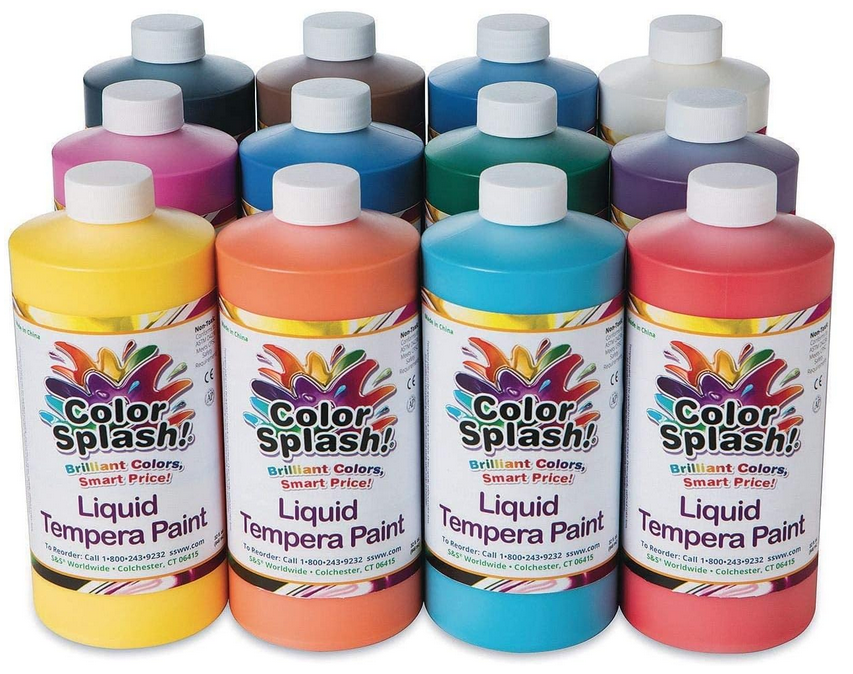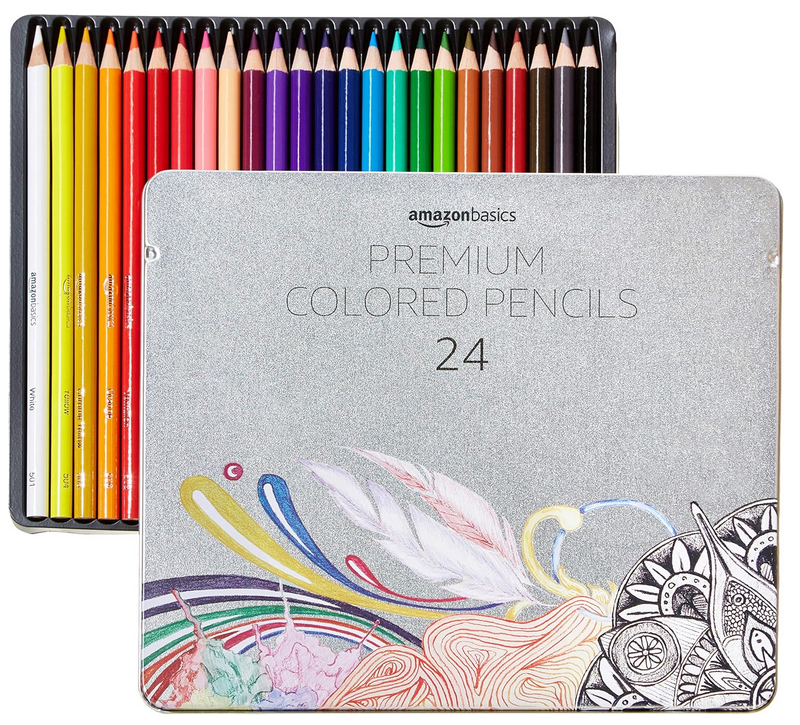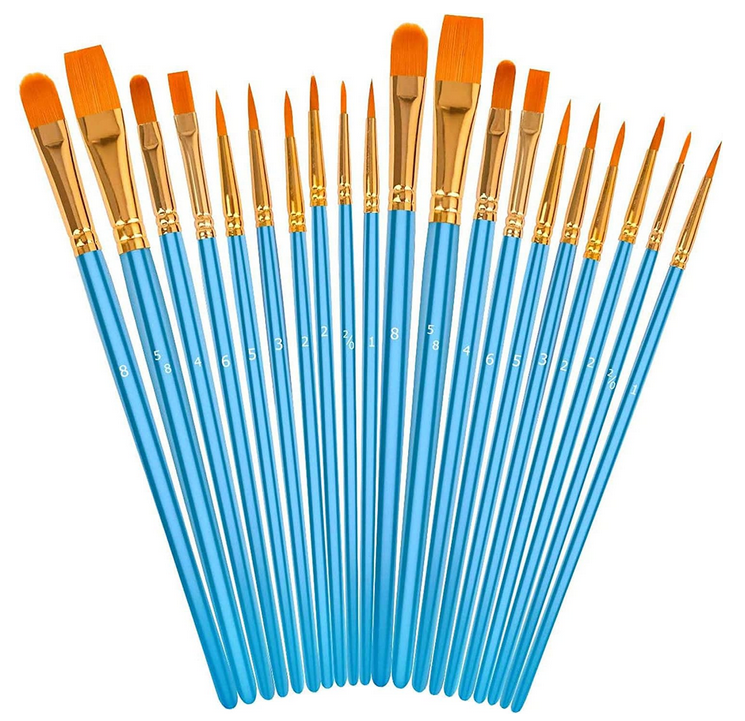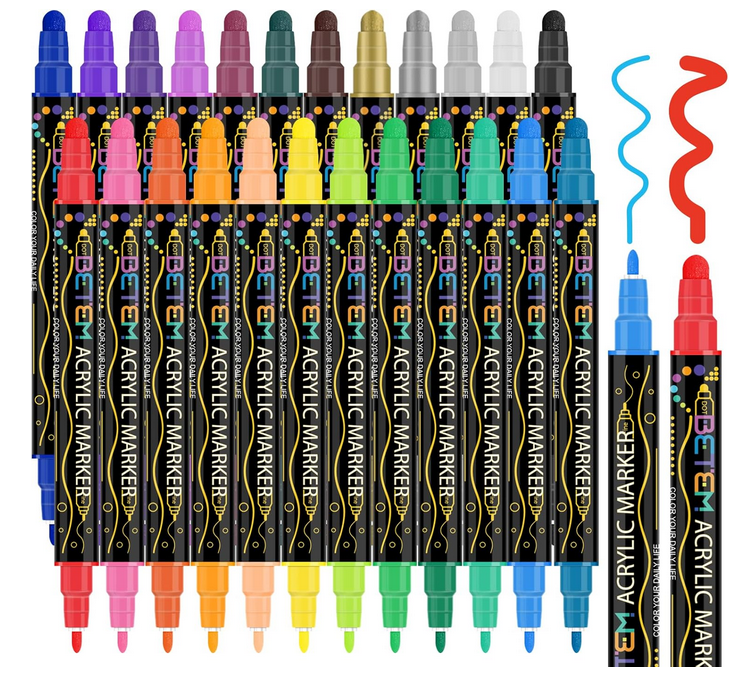- Home
- Art History
- Rococo
Rococo Style
Beginning in France as a reaction to the Baroque grandeur of Louis XIV’s court at the Palace of Versailles. Rococo was born in Paris, where it coincided with the reign of Louis XV (1723-1774).
The
Rococo first emerged in France during the 1720s
and 30s as a style developed by craftspeople and designers
rather than architects, which explains why it is found primarily in
furniture, silver and ceramics. Rococo
eventually was taken up by painters as well.
The Rococo style is an exceptionally ornamental and dramatic style of architecture, art and decoration which combines asymmetry, scrolling curves, gilding, white and pastel colors, sculpted molding, and trompe-l'œil frescoes to create surprise and the illusion of motion and drama. It is often described as the final expression of the Baroque movement.
Compared to the order, refinement and seriousness of the Classical style, Rococo was seen as superficial, degenerate and illogical.
Rococo artists featured natural elements to enhance their light-hearted scenes.
Rococo particularly exploited themes of love and coquetry.
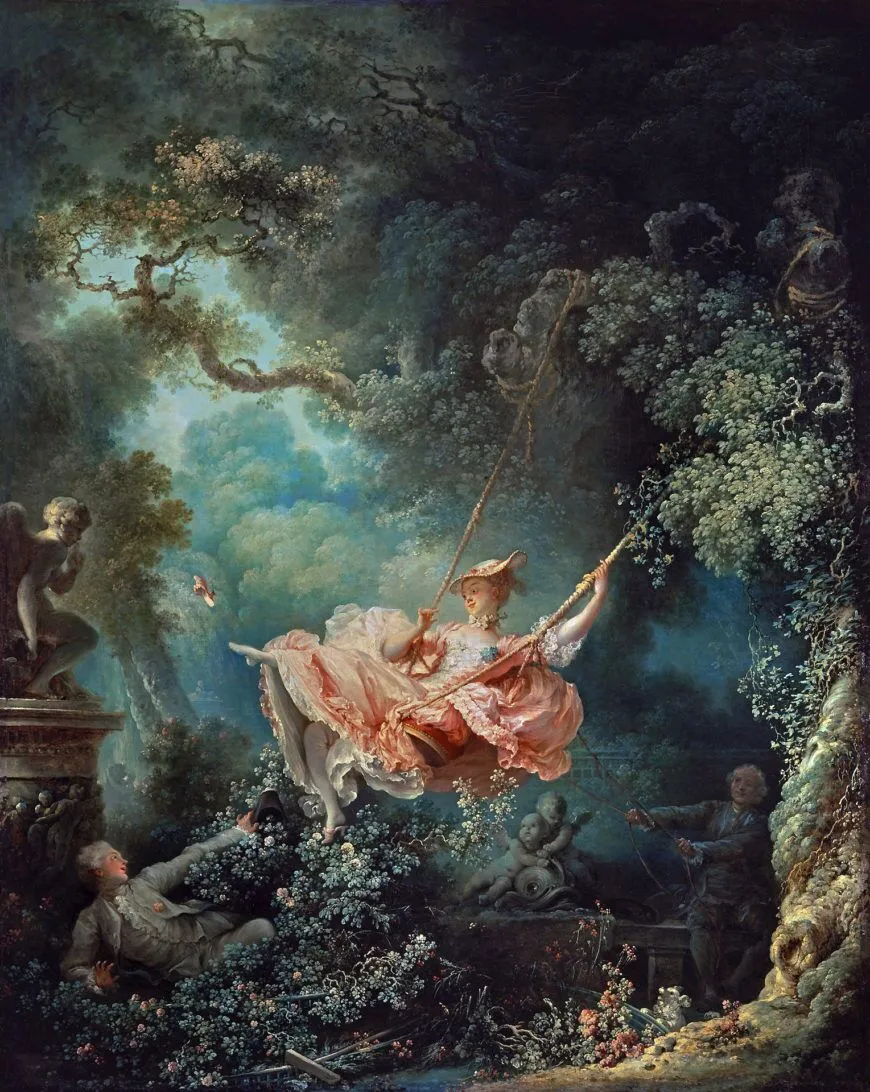 The Swing -
by Jean Honoré Fragonard The Swing -
by Jean Honoré Fragonard |
|
The Cupid statue, appropriate for a flirtatious scene, acts as a silent accomplice. |
The dainty pink shoe that flies through the air accentuates the playful mood. |
An animated little dog at bottom right jumps up and yaps a warning. |
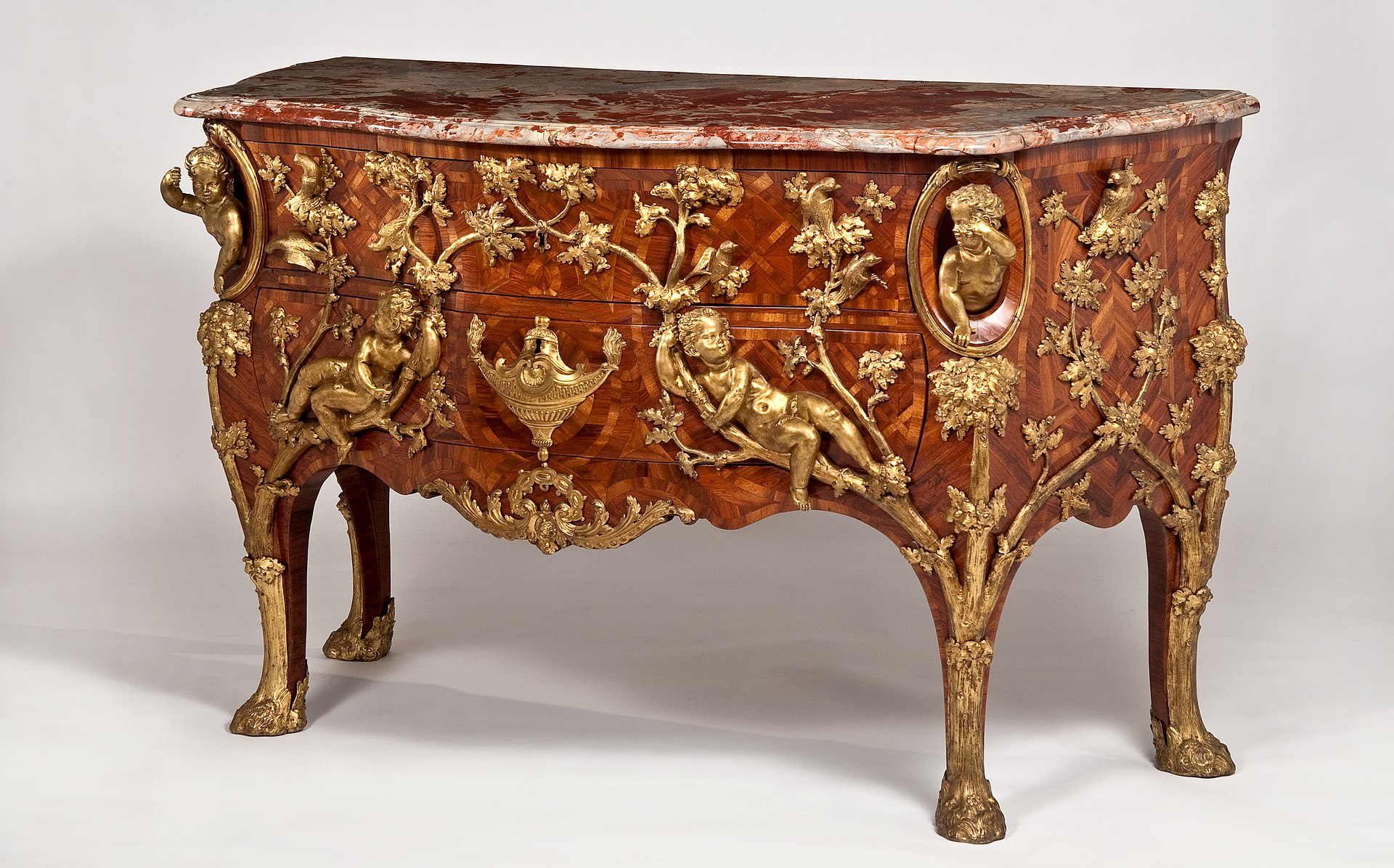
Rococo is characterized by lightness, elegance, and an exuberant use of curving natural forms in ornamentation.
The Rococo style is about slender lines, intricate details, playfulness and lightness.
|
The word Rococo is derived from the French word rocaille, which denoted the shell-covered rock work that was used to decorate artificial grottoes. |
Rococo
Art style points
- Sometimes called a "feminized" version of the Baroque style, it is associated with the aristocracy.
- The paintings feature beautiful aristocrats in gorgeous clothing.
- Often the paintings depict a peaceful natural setting with feathery trees and sprays of foliage.
- Colors are gentle, often pastels.
|
Boucher’s style was artificial in the extreme; he refused to paint from life, saying nature was “too green and badly lit.” |
Rococo achieved an irresistible blend of elegance, charm, wit, and playful eroticism until it gradually gave way to Neoclassicism. |
Rococo is a fusion of the French “rocaille” and the Italian “barocco.” The intended derisive combination of rocky decorative and Baroque quickly lost all its irony as the term became the movement’s name. In France Rococo is often called the style of Louis XV. |
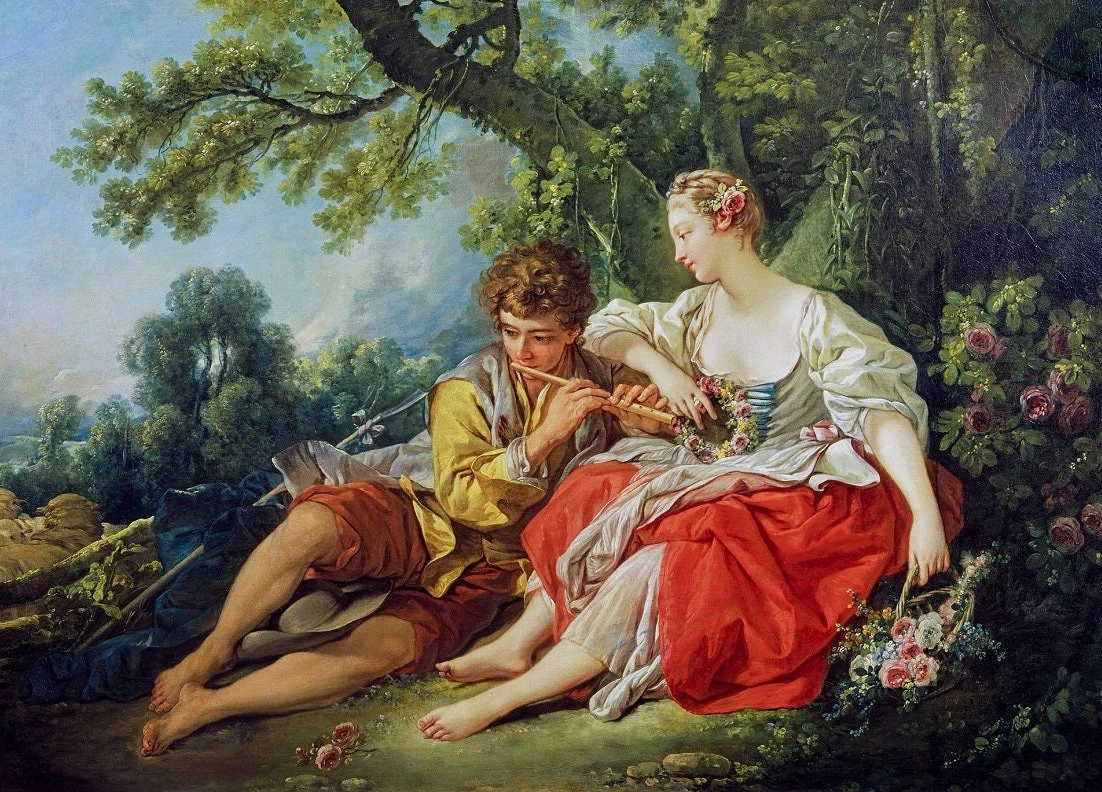
Boucher's pastoral scene is set in a rural idyll in which the shepherd can ignore his flock and and frolic with his love interest.
The romantic sentiment was a symptom of the Rococo obsession with romantic, and often illicit, love.
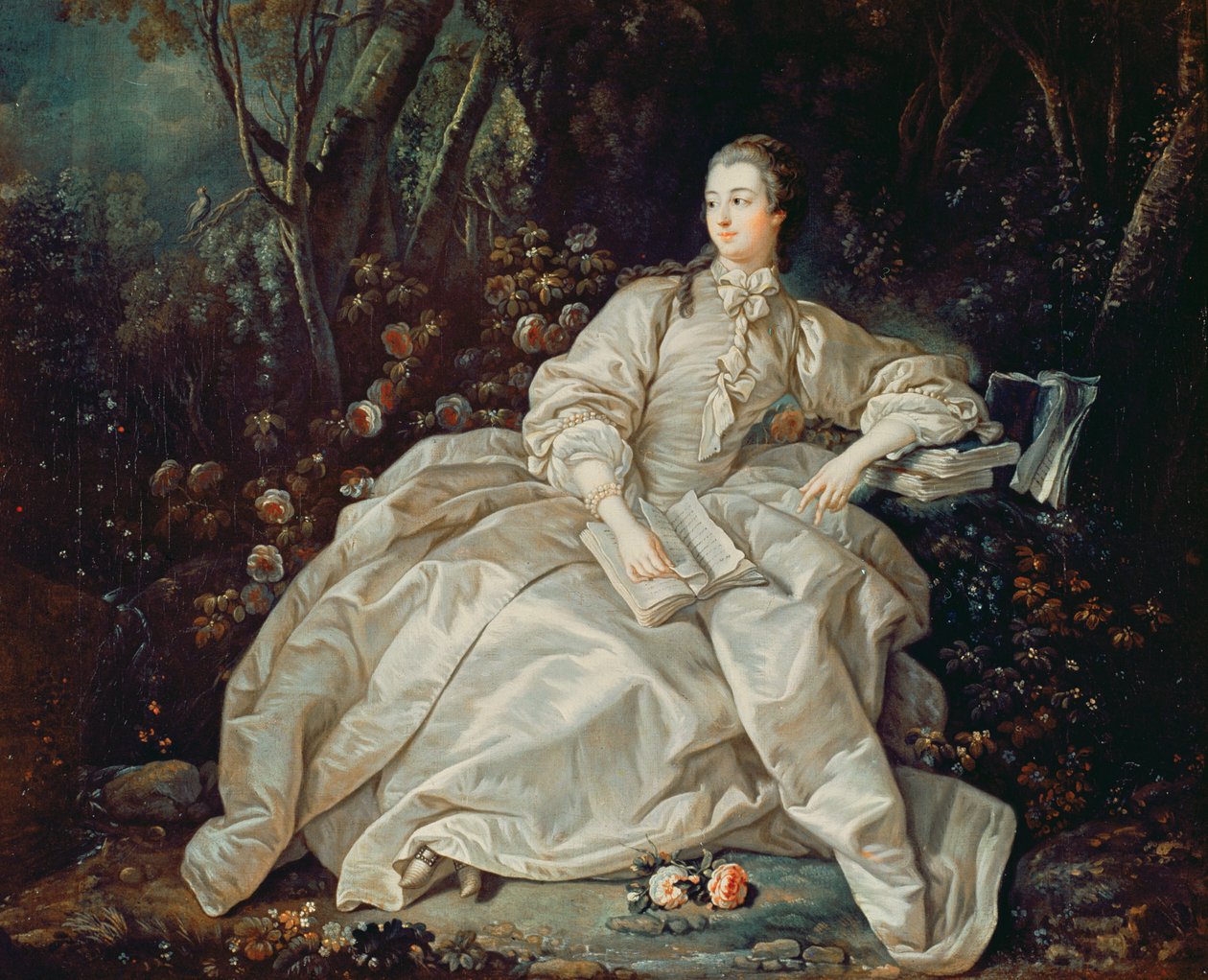
The Rococo movement is also associated with Madame de Pompadour, the mistress of Louis XV.
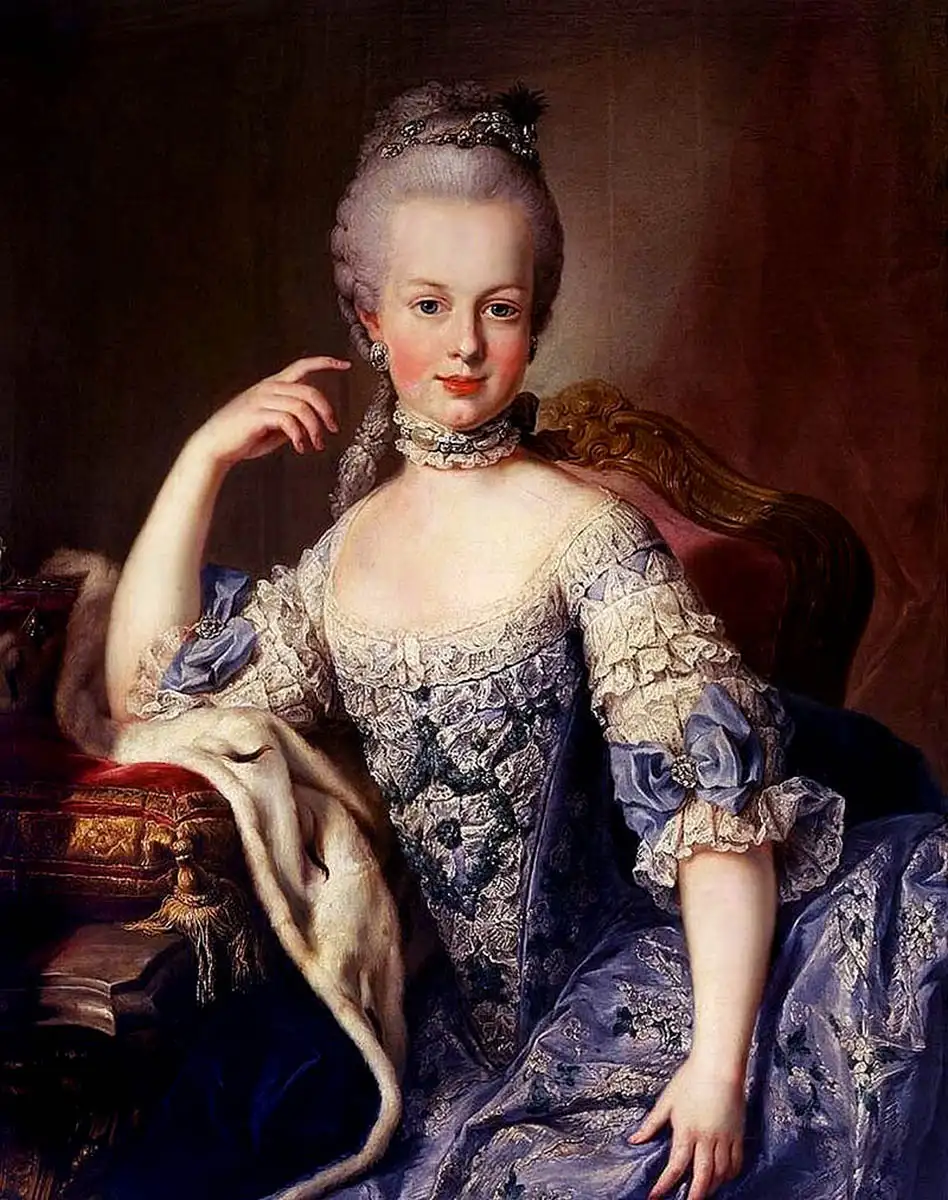
Queen
of frivolity and excess, Marie-Antoinette led Rococo fashion
with huge, poufy hairstyles, enormous pannier skirts and all manner
of decorative frills, feathers and bows. When her husband ascended to the throne as Louis XVI, she became the last Queen of France.
Les Fêtes Venitiennes by Watteau, c. 1716
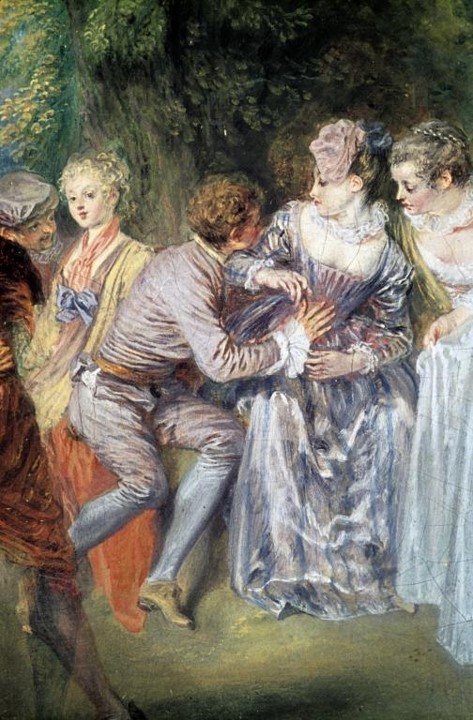
Watteau established a reputation in Paris. He honed the style of his fêtes galantes paintings and won the support of a rich financier and art collector, Pierre Crozat, who became his patron.
Although this painting may seem light-hearted and silly, it might not be so simple. Looking closer, the cheerful scene of a garden party can even assume a sinister atmosphere …
... Is the man harassing this young lady?
The light-hearted decorative style of Rococo flourished throughout Europe for much of the eighteenth century; it remained popular through the 1770s. Yet, criticized for its triviality and excess in ornament, Rococo style had already become more austere by the 1760s, as Neoclassicism began to take over as the dominant style in France and the rest of Europe.
The Baroque style was a development from a and reaction to the Baroque. Its artists worked for the same kind of patrons and treated similar themes; however, they stripped away the excessive pomp and grandeur associated with Baroque art. In France Rococo was shaped by three artists, Jean-Antoine Watteau, François Boucher and Jean-Honoré Fragonard. In Italy Rococo was mainly associated with the frescoes of Giambattista Tiepolo. In Germany, Austria, and Britain, the Rococo spirit found its greatest expression in architecture and the decorative arts, such as porcelain and tapestry..
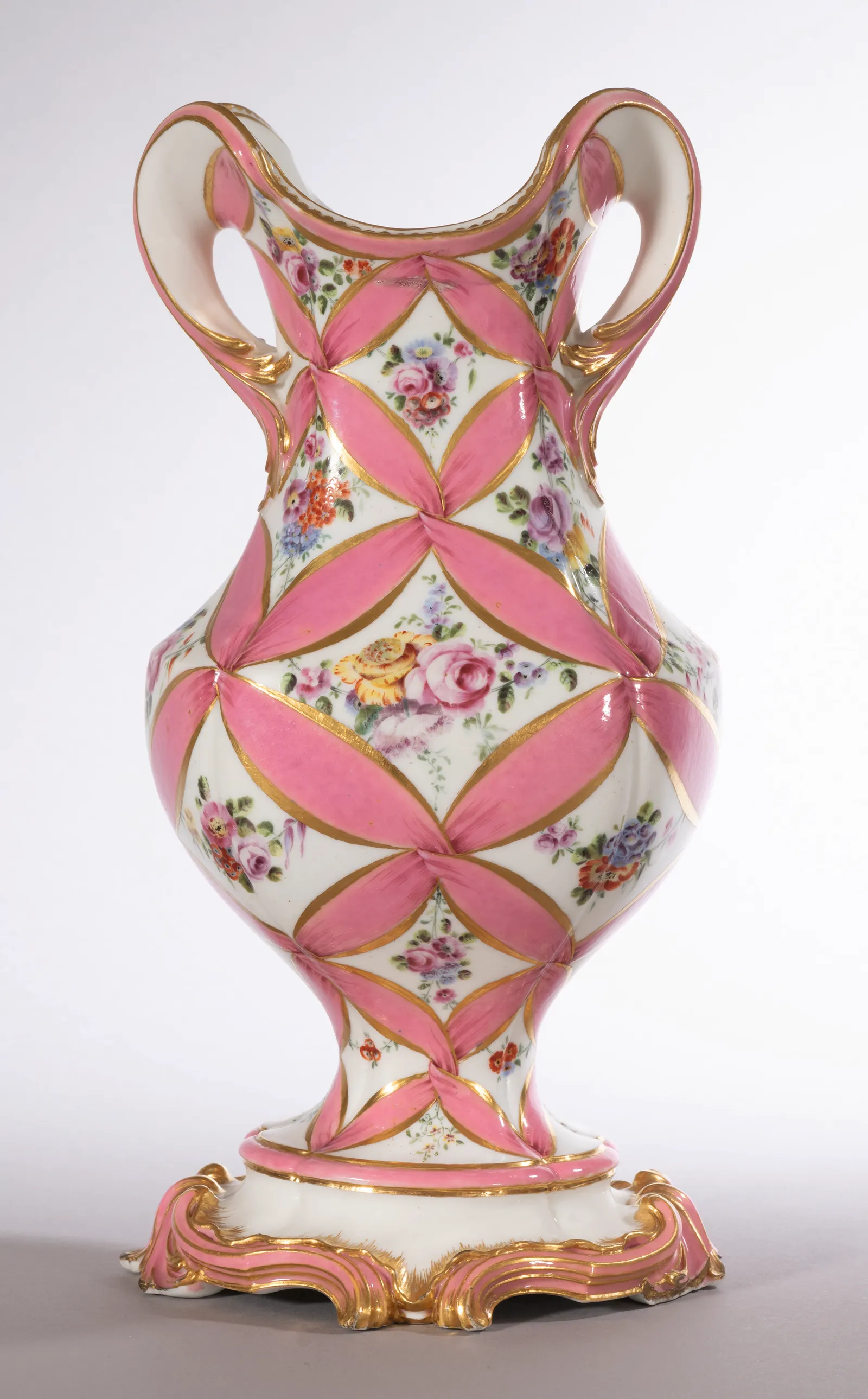 |
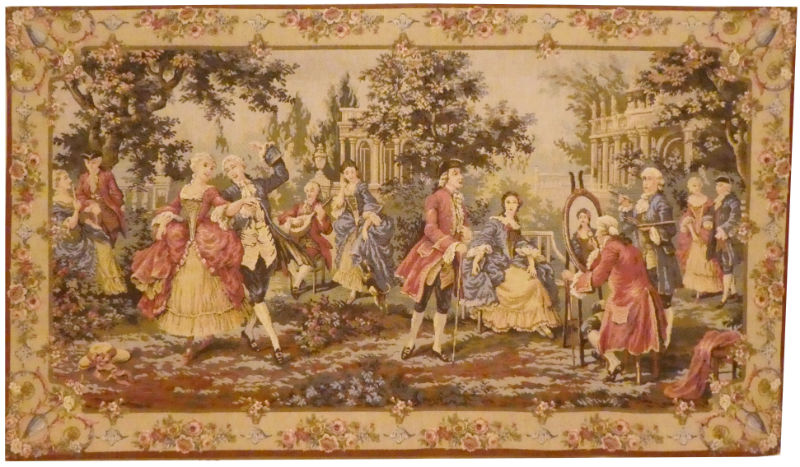 |
Okay, so now I've put on some ads from Amazon - from which I may earn a few cents. (2025)
